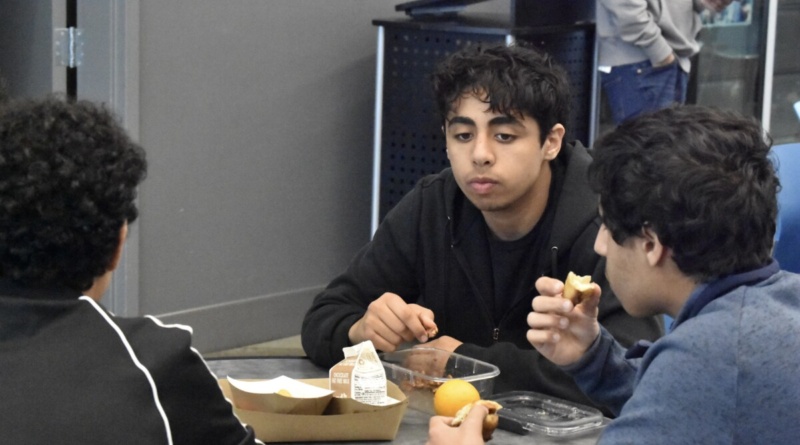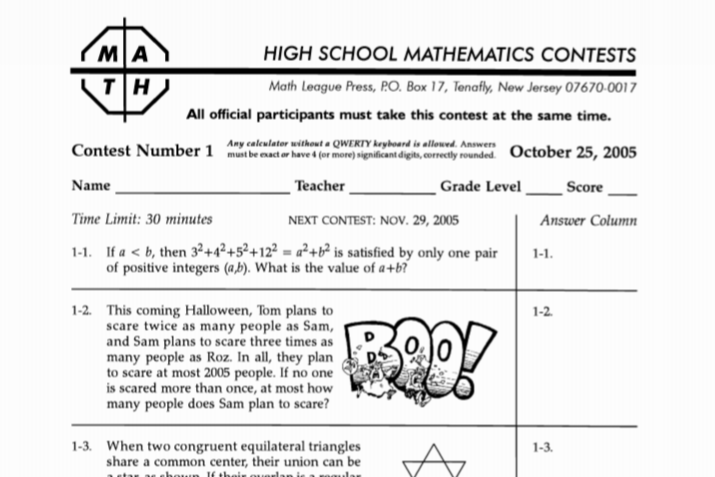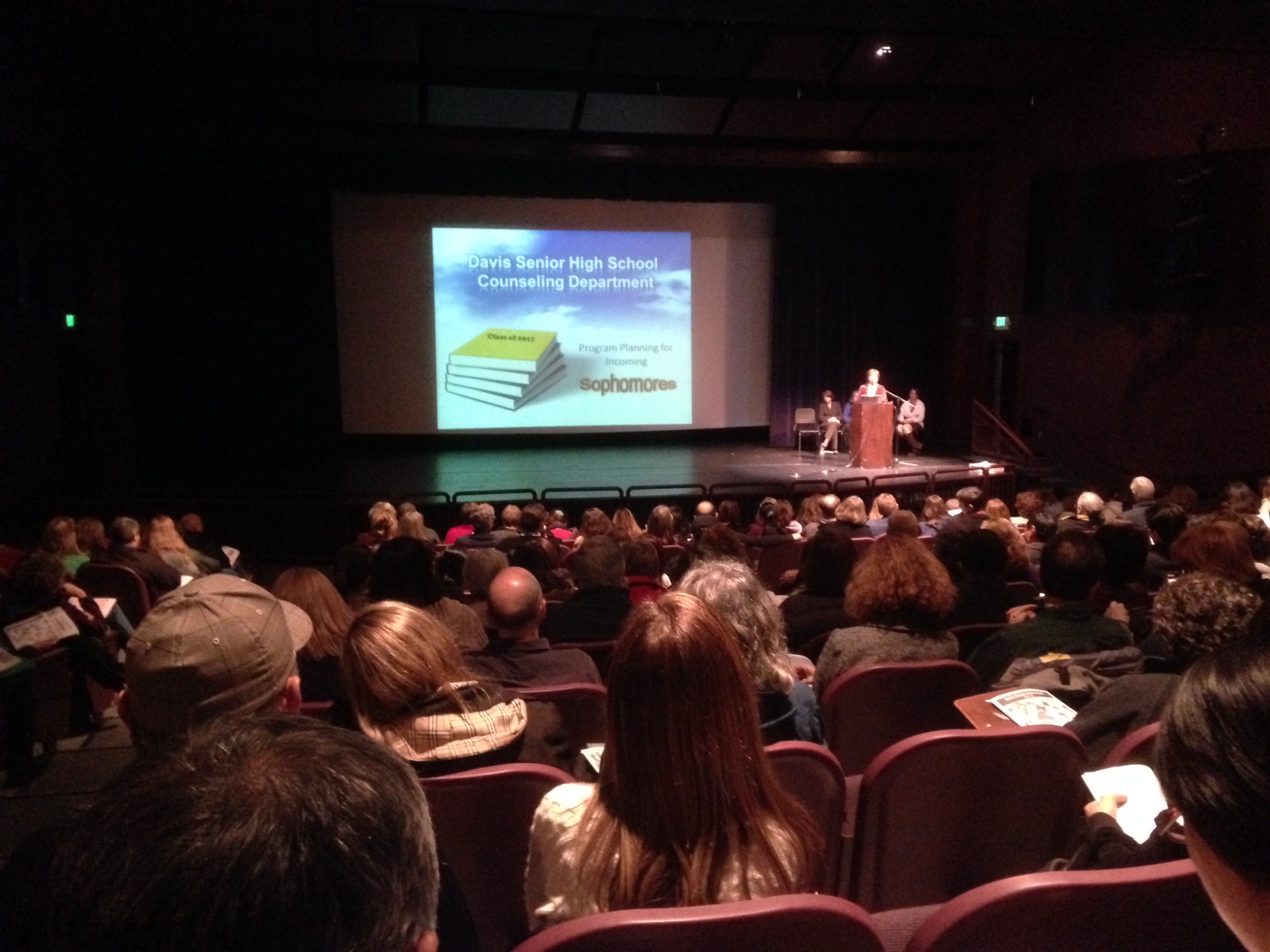Students hungry for a change
Cafeteria food fails to fuel DHS, students say
By Helena Massotti
BlueDevilHUB.com Staff–
When students are tired and malnourished during school hours, it impedes them from productively absorbing information and contributing to a positive learning environment.
While many of them eat lunch provided by the Davis High cafeteria, they still have complaints about the variety and quantity of the food served.
The majority of the daily lunch menu consists of burgers, pizzas, hotdogs and chicken patties, as well as some pre-packed sandwiches and salads. As far as culturally diverse foods go, pupusas are served on a daily basis while mandarin chicken, vegetable chow mein, chicken tacos and burritos rotate weekly.
“It would be nice to have more options,” sophomore Emma Labourdette said.
When interviewed, multiple cafeteria staff refrained from disclosing much information about the restraints in the food they’re required to serve. “I don’t want to get in trouble,” DHS kitchen manager Rita Harvey said.
More than 700 students get lunch per day. “I wish the students knew we weren’t mean, we’re just trying to serve food for so many people,” Harvey said.
Just five minutes into the lunch period, the cafeteria line typically goes all the way across the quad.
Students feel that quantity is as much an issue as variety. Every student who chooses to get a slice of pizza receives one piece, not to mention the burgers are about a palm wide.
“We’re serving the same sized portions to kindergarteners as we are to high schoolers,” Montgomery Elementary kitchen manager Kristy Labourdette said.
The quantity problem especially affects student athletes.
Sophomore Zev Fox is part of the cross country team at DHS, which is one of the best in the state, so his food intake heavily impacts his performance. “I eat the food at school after eating lunch I bring from home, so I get in line a little bit later,” he said. “Even then, lots of lunch options are gone.”
Some students hesitate to get food at school because of the way it tastes. Items on the menu must be as nutritious as possible, which means there’s no white bread or white rice. “As a picky eater, the way things look and smell is very important,” sophomore Emma Labourdette said.
Additionally, federal law mandates fruits, vegetables, starches, grains and proteins to be served with every meal.
“It’s so inconsistent,” sophomore Hyacinth Mailhot said. “At the beginning of the week the fruits look fine, but after a couple days they just get really sad. I wish they were fresh.”
California standards regulate lunch nutrition
By Alice Goncharova
BlueDevilHUB.com Staff–
Even though the cafeteria staff at Davis High has very little freedom to make the lunch food healthier or tastier due to government regulations, they try their best to make nutritious lunches for all students.
“The cafeteria does well within those resources to make decent school lunches,” senior May Edmons said.
Principal Bryce Geigle says that even a school administrator has very little influence over Student Nutritional Services (SNS). That is because the state and the California Department of Education (CDE) direct most of the SNS.
“There aren’t many resources for cafeteria workers to go outside of the requirements from the state,” Geigle said.
Daniel A. Sumner, a UC Davis food and agriculture economist, says the government has four main factors in mind when it comes to school lunches. These are safety requirements, minimum nutrition requirements, price and how appealing it is to kids.
Sumner also states that though people might want to change something in the school lunch, to make it better, it’s really hard to do.
The problem, Sumner says, is that meeting the extra requirements “doesn’t do you any good if it’s not eaten.”
He says another main challenge in changing school food is that if you try to make changes to the school lunch the people making them would have to work harder and get paid more than the budget allows.
“So what would seem to me and perhaps you as an obvious solution, to the person running that cafeteria it brings more problems,” Sumner said.
Most students who eat at the cafeteria take those school lunches mostly out of convenience.
Edmons says that she likes the lunch food even though it doesn’t fully meet the bar when it comes to nutrition.“It is a pretty decent option,” Edmons said.
Some teachers agree that the school food is a good option for many people.
P.E. and World Civilization teacher Robert Resslsays that school lunches are a way for students to get some high-quality food. He understands that a balanced diet consists of many different foods to get all the nutrients needed and believes that the lunches are doing well in those factors.
“It sounds like the school lunch is trying to achieve that by providing fruit and vegetables and having access to milk,” Ressl said.
Other students however prefer a lunch made at home.
Sophomore Haylee Kim has not tried DHS food because it did not seem appealing to her in thepast, but she understands why other kids do.
“If they don’t have a lot of time and they have to rush to get here then I feel like school lunches would be really beneficial,” Kim said.



